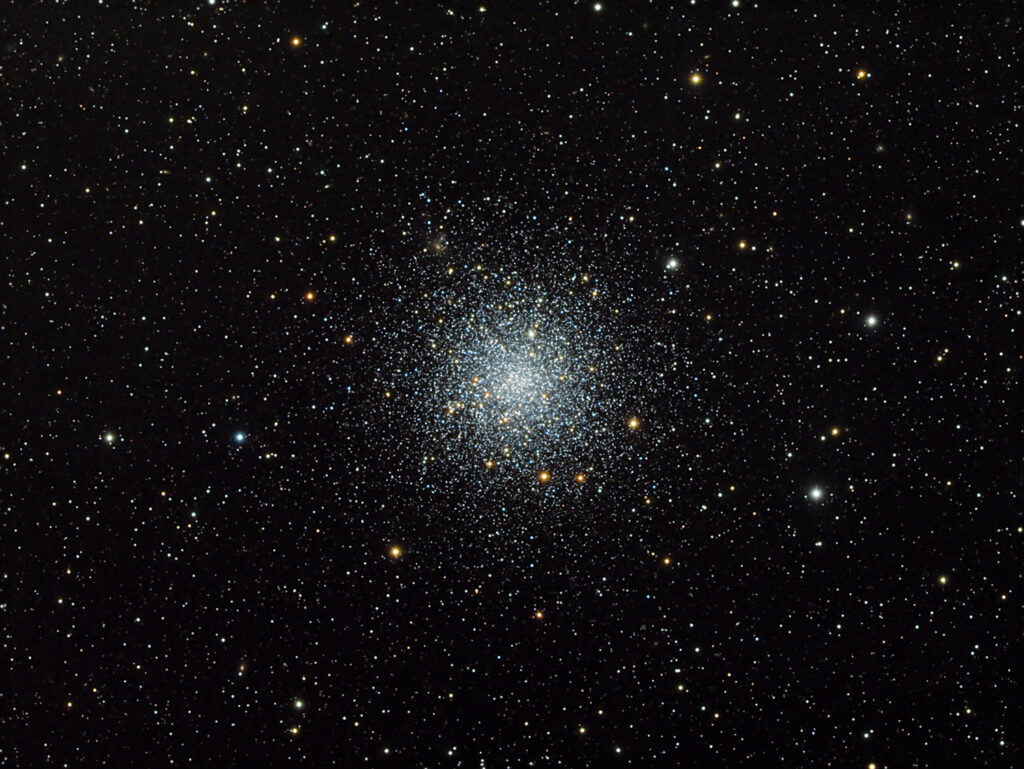Messier 12
Globular Cluster, Ophiuchus
- Description
- Technical
- Links
Messier 12 or M 12 (also designated NGC 6218) is a globular cluster in the constellation of Ophiuchus. It was discovered by the French astronomer Charles Messier on May 30, 1764, who described it as a “nebula without stars”. In dark conditions this cluster can be faintly seen with a pair of binoculars. Resolving the stellar components requires a telescope with an aperture of 8 in (20 cm) or greater. In a 10 in (25 cm) scope, the granular core shows a diameter of 3′ (arcminutes) surrounded by a 10′ halo of stars.
Roughly 3° northwest from the cluster M10 and 5.6° east southeast from star Lambda Ophiuchi, M12 is about 15,700 light-years (4,800 parsecs) from Earth and has a spatial diameter of about 75 light-years. The brightest stars of M12 are of 12th magnitude. With a Shapley-Sawyer rating of IX, it is rather loosely packed for a globular and was once thought to be a tightly concentrated open cluster. Thirteen variable stars have been recorded in this cluster. M12 is approaching us at a velocity of 16 km/s.
A study published in 2006 concluded that this cluster has an unusually low number of low-mass stars. The authors surmise that they were stripped from the cluster by passage through the relatively matter-rich plane of the Milky Way.
Telescope: Astro Physics 175EDF f8.3
Mount: Astro Physics 3600GTO “El Capitan”
Camera: SBIG STT8300
Guider: Mini Borg 50 / SBIG STi
L: 34×5 mins = 170 mins, R: 24×5 mins = 120 mins, G: 24×5 mins = 120 mins, B: 24×5 mins = 120 mins
Total Imaging Time: 8h 50m
Data Imaged remotely over 6 nights during June 2018.
Data acquisition & Processing by David Churchill.
None

